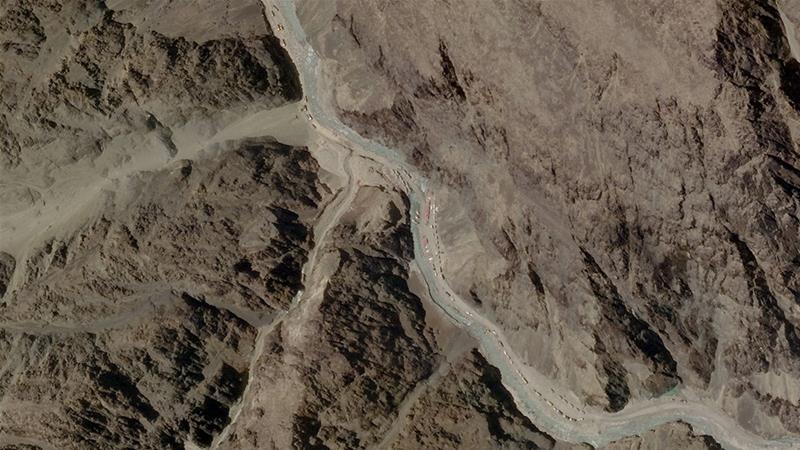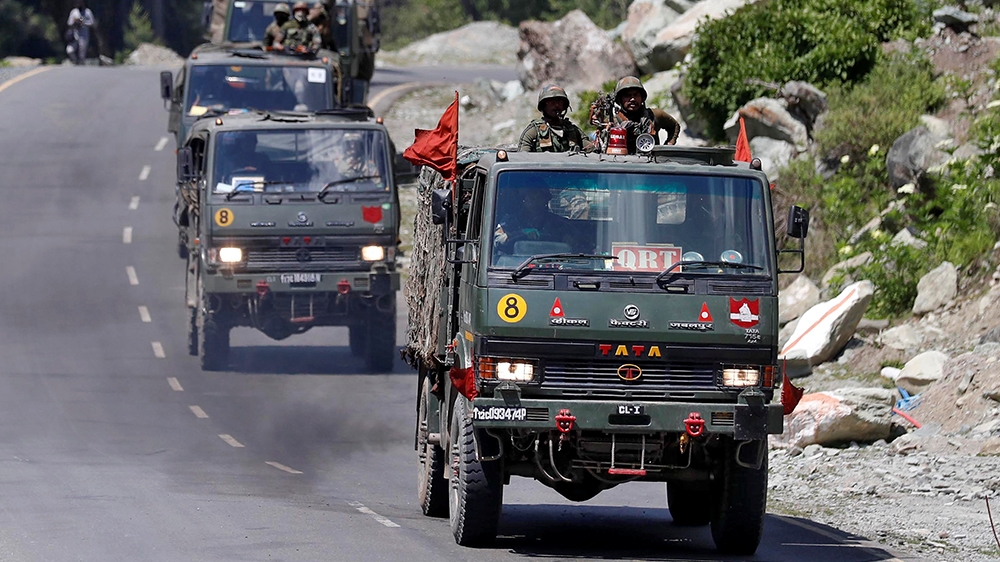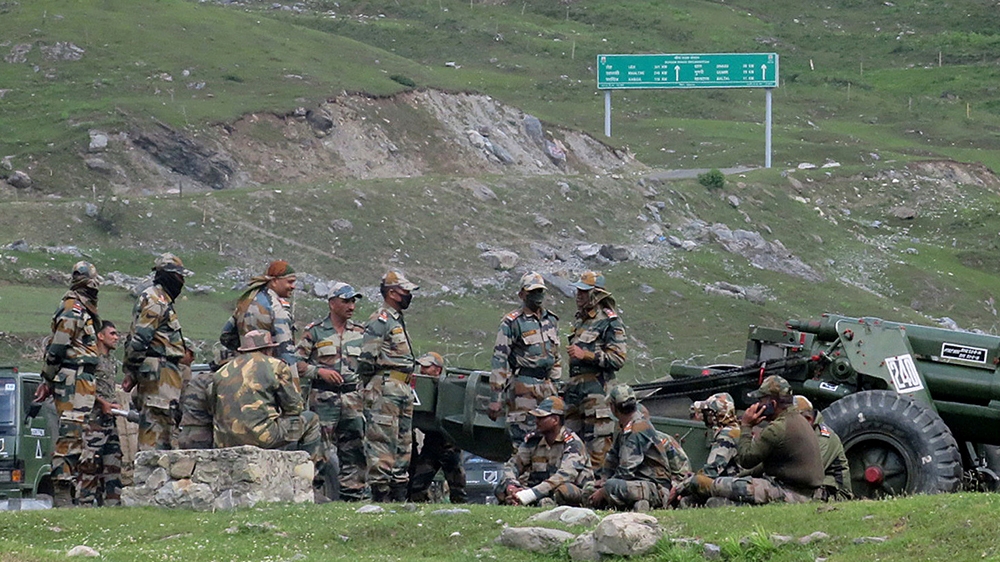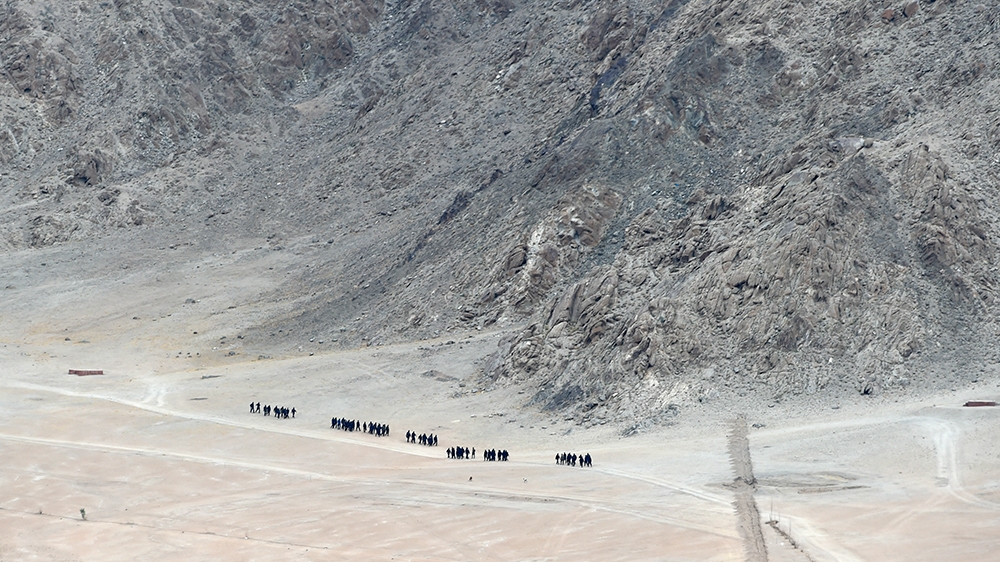Home » World News »
India-China border talks: Four things you should know
Indian and Chinese officials are holding another round of talks to try to resolve a months-long border standoff.
Indian and Chinese officials are holding talks to try to resolve a months-long standoff along their disputed frontier, where the two countries have deployed tens of thousands of soldiers.
More than a dozen rounds of talks so far have failed to break the border stalemate.
Experts say India’s stripping part of the disputed Kashmir region – which lies between India, Pakistan and China – of its autonomy a year ago exacerbated existing tensions with China and culminated in the deadliest clash between the Asian giants in more 45 years.
China saw this as a unilateral move that threatened its territorial sovereignty and condemned it at the United Nations.
The ongoing standoff in the Karakoram mountains is over disputed portions of a pristine landscape that boasts the world’s highest landing strip, a glacier that feeds one of the largest irrigation systems in the world, and a critical link to China’s massive “Belt and Road” infrastructure project.
Some key background on the issue:
Where is Kashmir and who controls it?
The Himalayan territory of Kashmir is divided between India and Pakistan. Its eastern edge, the cold, high-altitude desert region of Ladakh, borders China on one side and Pakistan on the other and is home to the world’s only three-way, nuclear-armed junction.
Pakistan and India have rival claims to Kashmir that date to the British Raj’s Partition in 1947, and have gone to war twice over them. Each country administers a portion of the region.
Many ethnic Kashmiri Muslims on the Indian side support an armed movement that demands the territory be united either under Pakistani rule or as an independent country.
In August 2019, New Delhi stripped Indian-administered Kashmir of its statehood, demoting it to a federal territory, and clamped down on dissent.
The region’s decades-old semi-autonomy, which protected jobs and land from outsiders, was also scrapped.
New Delhi also carved out Ladakh as a separate federal territory.
How does China view Kashmir?
China and India went to war over their disputed border issues in a 1962 conflict that spilled into Ladakh and ended with an uneasy truce.
Since then, troops from opposing sides have guarded the undefined, mountainous 3,500km-long (2,200-mile) border area, occasionally brawling.
They agreed not to attack each other with firearms. But on June 15, soldiers from the two sides fought with clubs, stones and fists, leading to 20 Indian soldiers succumbing to their injuries in the freezing temperatures. It was the deadliest fighting between the sides in 45 years.
Experts and some Chinese commentators have said New Delhi’s unilateral changes in Kashmir spawned the border tensions between the Asian giants.
The change “forced China into the Kashmir dispute,” Wang Shida, a South Asia expert at the China Institutes of Contemporary International Relations, a Beijing-based think-tank, wrote in a recent report.
The Chinese foreign ministry expressed its opinion clearly the day after the status change: “India has continued to undermine China’s territorial sovereignty by unilaterally changing its domestic law … Such practice is unacceptable and will not come into force.”
China later joined Pakistan in condemning India’s move at the UN Security Council.
Perhaps more vitally for Beijing, parts of Kashmir fall within its “Belt and Road” initiative, a massive, cross-continental infrastructure development project aimed at expanding China’s commercial connections globally.
China’s expansive road network crosses through Aksai Chin, a region it has held since 1950 and claimed by India as part of Ladakh.
It connects the restive, Chinese-controlled provinces of Tibet and Xinjiang before snaking north of Indian-administered Kashmir and cutting down through the Pakistani-administered portion of the region towards Pakistan’s Gwadar port in the Arabian Sea.
“China perceived the constitutional changes in Jammu and Kashmir as a threat” to Chinese interests in the region, specifically infrastructure projects linking China with Pakistan through Kashmiri territories controlled by Pakistan, said Lt Gen Vinod Bhatia, India’s director-general for military operations from 2012 to 2014.
He said calls by India’s powerful home minister and other leaders of Prime Minister Narendra Modi’s Hindu nationalist Bharatiya Janata Party for the “liberation” of Aksai Chin further provoked China’s “aggressive behaviour”.
The US factor
A growing strategic alliance between India and the United States has ruffled feathers in Beijing, which sees the relationship as an attempt to block its rise to power.
Now, the India-China conflict threatens to exacerbate tensions between China and the US. The two have locked horns this year over a range of issues, from trade disputes and human rights to Hong Kong’s status and the initial response to the coronavirus pandemic.
While New Delhi unilaterally changing Kashmir’s constitutional status has been an “immediate provocation for China,” according to Pravin Sawhney, a defence analyst and China expert, its military posturing along the disputed border in Ladakh also reflects a “compelling narrative that India is siding with the US.”
Wang Lian, an India specialist at Peking University in Beijing, said China expects to see Modi leveraging the recent border clashes as a way to draw in more US support.
“He may use the current complicated China-US relations in attempt to gain a better position that will maximise India’s interests,” Lian said, adding that Modi might also “try to use its domestic and international situation to find a better position in border negotiations with China.”
How Kashmiris view the power struggle
Since the mid-June army clashes between China and India, residents of Ladakh’s towns, dotted with Buddhist temples and cafes for mountaineering tourists, have watched uneasily as Indian troops brought in fighter jets, artillery and construction materials. The activity has marked one of the most significant military buildups in decades.
“We’ve never seen anything like this. Not even in 1999 when Indian and Pakistani soldiers fought for months in neighbouring Kargil Heights,” said Tsering Angchuk, a wool trader.
Feelings are different in the Muslim-majority Kashmir Valley, where India-China tensions have energised anti-India sentiment.
In Kashmir’s main city of Srinagar, demonstrators on June 21 jeered at Indian soldiers, shouting: “China is coming!”
“We hope powerful China’s involvement helps us to end India’s occupation of Kashmir,” said dried fruit merchant Nazir Ahmed.
Source: Read Full Article







